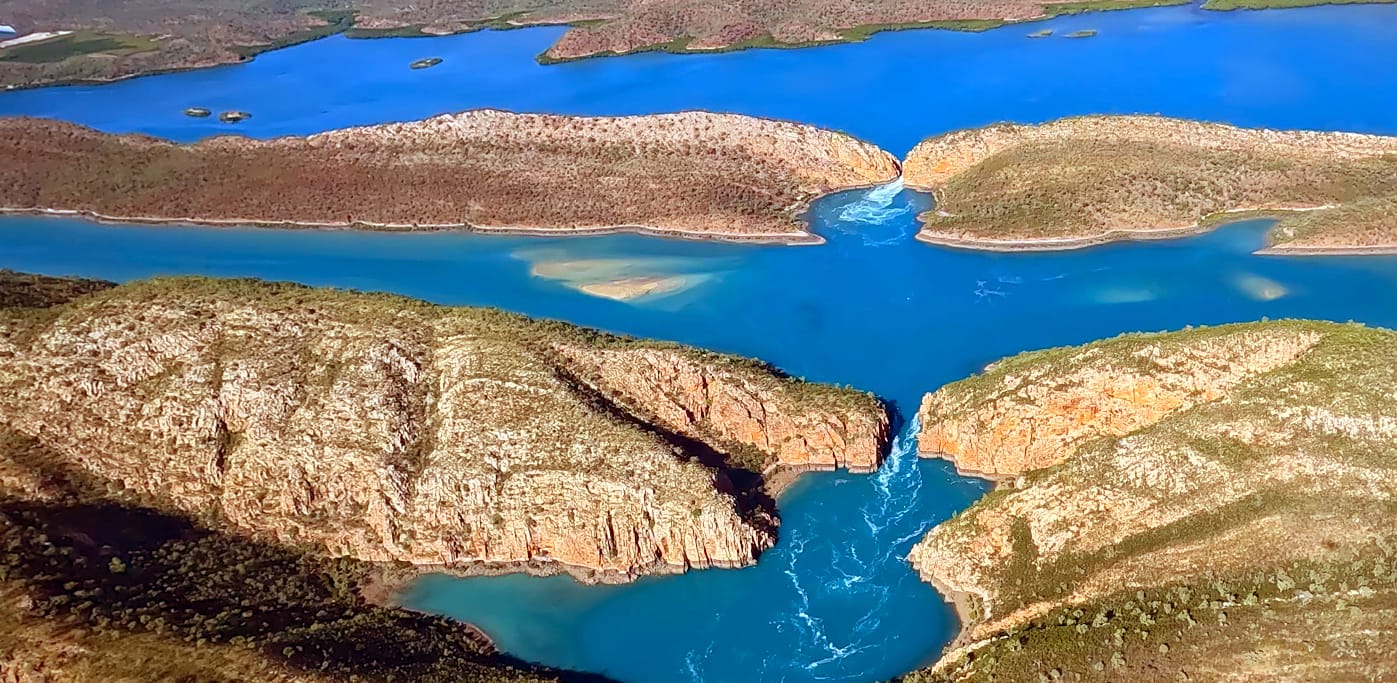Despatch to Jennifer Merigan, Travel Editor, Have a Go News
Hi Jen
Broome has a wow factor as any numbat can tell you. But the more we visit, the more we learn.
Residents reckon they don’t usually put up house numbers because there are no mail deliveries – mail being collected at the post office. They say they know who lives in each house by the car parked out the front.
Casual dress is standard in Broome, even for the races. Except for the Broome Cup. While high-heels are welcome, ladies coming up from Perth are advised to leave their pantyhose back home to tie-up their tomato bushes.
Incidentally, while country racecourses traditionally water their dusty racetracks, Broome uses oil.
Broome doesn’t only race horses. They’ve raced crabs here for 24 years with the creatures plucked off the shore weekly. Proceeds go to charity. Crabs are set-free.
Chinatown, the town’s hub, isn’t a Chinatown at all. Chinese had businesses there, so did the Japanese who helped lay the foundation of the pearling industry. It was called Japtown – until Japan entered WW2.
Japtown was central to a ground-and-back-breaking industry but also featured opium dens, brothels and mah-jong palaces.
In town, pedestrians give-way to cars.
Broome was Australia’s first genuine multi-cultural town but seating at Broome’s Sun Pictures was segregated and Broome has separate Chinese and Japanese cemeteries.
Sun Pictures is in the Guinness Book of Records as the world’s longest-operating picture garden.
Broome’s Japanese sister city is Taiji where, in 1878, fishermen tried to kill a massive whale. The cetacean dragged the men out to sea, drowning 100. If not for the incident, the Japanese might not have come to Broome.
Master pearlers called themselves captain and wore white suits which they changed twice-daily due to the red dust. They had them laundered in Singapore.
Broome Airport is smack in the middle of town. Street lights had to be shortened because they were in line with the aircraft flight path.
In tides that rise 10 metres, the water reaches up to the edge of the airport. Last year, 20 cars parked on beaches were claimed by king tides.
Broome is truly batty. More than 50,000 bats live in the town’s mangroves, emerging in massive numbers at sunset and swooping over tourists waiting to watch the Staircase to the Moon.
Riddell Beach is named after Captain Riddell who, along with his son and his first mate, was killed by his Malay crew in 1899. The crew were turned-in by Chinese cook John Chi and hanged in Fremantle.
Broome’s golf course is proudly proclaimed to have the only grassed putting greens between Darwin and Perth.
Gubinge trees growing in Broome produce fruit said to be the world’s highest natural source of Vitamin C.
Patrick Percy, Broome’s pioneering lighthouse keeper, build an inter-tidal natural rock pool, called Anastasia’s Pool, next to the lighthouse to provide pain relief for his arthritic wife.
Broome proudly proclaims it is 14,000 kms from Timbuktu.
In 1904, the Dampier Despatch reported how Broome was getting civilised and listed the Broome Lawn Tennis Club. “Fancy a lawn in Broome”, it exclaimed.
Aboriginal students take probably the world’s longest trips to school each term. Picked-up from their outposts by light planes, they fly to Broome and switch to commercial jets to attend Perth boarding schools.
Popular beach spot, North of the Rocks, is the base for both camel rides and nude bathing.
Road-shaken motorists are said to have been given the Kimberley massage.
Broome pearl shell was top in the world for buttons – until plastic took over from pearl shell.
Everyone loves Broome – except the man it was named after, Frederick Broome, WA Governor in 1883. He didn’t like the look of the place and asked for his name to be removed.
Permission denied!































![IMG_6397[1] copy](https://www.haveagonews.com.au/wp-content/uploads/2018/08/IMG_63971-copy.jpg)




